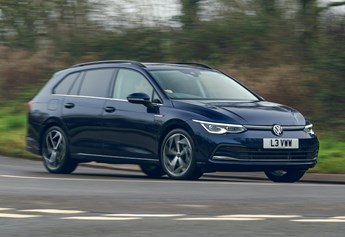We use cookies to ensure that we give you the best experience on our website. If you continue without changing your settings, we will assume that you are happy to receive all cookies on the Business Car website. However, if you would like to, you can change your cookies at any time

The start point for the best source of fleet information |
First drive: Volkswagen Golf Estate
Date: 08 June 2021 | Author: Sean Keywood

|
|
||||||||||||||||||||
The Volkswagen Golf has long had a reputation as a strong all-rounder, and if your all-round needs involve bigger loads than most, then the Golf Estate always seemed a sensible bet. First introduced in 1992, the variant has now made its debut with the Mk8 Golf range joining the hatch, which launched late in 2019.
Compared with the previous model, the new Golf Estate has 22 litres more boot space with the rear seats down, meaning a maximum of 1,642 litres of room (611 with the seats in place). The boot has a low lip, offering easy access, and with the adjustable boot floor at its higher setting (switching between the two takes a few seconds) has a nearly flat entry point. The seats don't fold completely flat, but can be dropped easily with a single pull of levers next to the tailgate, while a load-through hatch allows long thin items to extend into the cabin while still carrying two rear seat passengers.
The boot space increase is partly thanks to a 66mm longer wheelbase than with the previous Golf Estate, and this also delivers impressive rear leg room, while any regular back seat passengers will also likely be impressed by the presence of two USB-C sockets (two more are up front), and with our mid-range Style grade test car, their own dedicated climate controls.
All Golf Estates offer a good level of standard equipment, including LED lights, a 10in Digital Cockpit display and a 10in infotainment screen. The latter's core functions work well, but the usability factor is let down by overly complicated touch slider controls for the audio volume and climate settings - a fiddly control method that's even been extended to the optional panoramic roof fitted to our test car.
Interior material quality seems generally pretty good, though the perception of some of the plastics might be lifted by the cream colour scheme specced with our test car. Instead of leather, Style cars get microfibre seats, but these have an impressively high-quality feel.
The Golf Estate offers a well-resolved ride around town - not pillow soft but very nicely controlled over ruts and bumps with no undue crashing about - and this composure remains in place at higher speeds. An electronic differential lock is standard throughout the range, helping with traction, and the model feels highly assured when dealing with bends, inspiring plenty of confidence.
A wide choice of engines includes three petrols (with or without mild hybrid systems) and two diesels - the plug-in hybrid options offered with the hatch don't extend to the estate unfortunately. Tested here is the most powerful diesel, which can deliver an impressive slug of torque when brisk acceleration is required, and refined running the rest of the time. It's paired with a seven-speed DSG auto, which generally works well, although the powertrain can be a bit dozy at junctions, meaning you need to allow time for it to respond when spotting a gap to pull into.
The Golf Estate is a solid performer on whole-life costs as, although the likes of the Ford Focus and Skoda Octavia are cheaper to buy, the Golf's stronger residual values mean that over three years there's very little to separate them as comparable diesel models. However, what will doubtless be of interest to many fleet buyers is that unlike the Golf, fellow VW Group models the Octavia and Seat Leon estates are both now also available as plug-in hybrids. In 2021, that could prove a major disadvantage for the Golf.
Volkswagen Golf Estate Style 2.0 TDI 150 PS DSG
P11D: £30,235
Residual value: 38.5%
Depreciation: £18,597
Fuel: £5,659
Service, maintenance and repair: £2,183
Cost per mile: 44.06p
Fuel consumption: 60.1mpg
CO2 (BIK %): 124g/km (28%)
BIK 20/40% a month: £141/£282
Luggage capacity: 611 litres
Engine size/power: 1,968cc/150hp
Verdict |
8/10 |
|||
 |
|
 |
|
|











